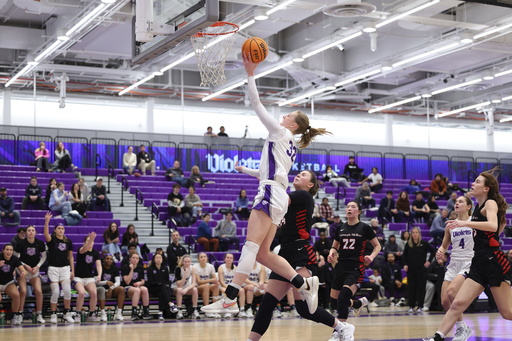
NEW YORK — The women’s basketball squad at NYU is on an extraordinary winning streak, achieving a remarkable feat that few programs can claim. The Violets, currently ranked No. 1, have achieved 49 straight victories, a streak that goes back to their undefeated journey last season when they captured the NCAA Division III national championship. This run ties them for the 16th-longest winning streak in NCAA women’s basketball history across all divisions and marks the longest active streak among all NCAA basketball teams, both men’s and women’s.
Their next opportunity to extend this impressive run comes on Friday night at their home venue, where they will face the University of Chicago—a team that the Violets defeated by a significant margin of 76-49 just last week. Securing a win in this matchup would allow NYU to equal Amherst’s record for the ninth-longest winning streak in Division III history.
Despite the incredible accomplishment of the winning streak, the team’s attention remains firmly fixed on their current season and not on the numbers. Coach Meg Barber emphasized the uniqueness of the current squad, likening their season to a fresh challenge and distinct puzzle. “This team is doing its own special thing. Every game makes me nervous,” she remarked, reflecting on the team’s growth and performance throughout the season.
As a testament to their dominance, NYU has only fallen behind once this season—trailing 5-2 to Case Western—a game they eventually won with an overwhelming score of 107-31. Barber noted that the team was unaware of their remarkable accomplishments until they viewed a game replay and heard the announcer mention the streak. “I was taken aback,” she said, admitting to being focused on the game rather than statistics.
Barber’s path to coaching was unexpected; she initially stepped away from sports after attending law school following her stint as an assistant at Temple. However, a call from her former coach at NYU, Janice Quinn, reignited her passion for basketball, luring her back to NYU with a coaching opportunity that felt tailor-made for her aspirations and experiences.
The university has evolved significantly since Barber played there in the late 1990s. Recently, NYU invested nearly $1.3 billion to renovate its athletic facilities in Greenwich Village, which now include modern classrooms, housing for students and faculty, and state-of-the-art performing arts venues. From 2016 to 2023, the teams played at other venues, but the new facility opened its doors to much anticipation in 2023.
NYU’s success extends beyond women’s basketball; the men’s basketball team currently ranks No. 3 in Division III, while the men’s volleyball team holds the top spot. The women’s volleyball team even had the honor of reaching the Final Four in the first year the new facility opened.
During the construction phase, Barber had the daunting task of attracting recruits to join the program. One such recruit was standout player Natalie Bruns, who recalled moments of her recruitment where Barber shared visions and plans for NYU’s future.
“Beyond just the court, it was about the team culture and the support system we would have,” Bruns shared, underscoring the importance of joining a program with strong backing. Bruns played a pivotal role in their championship victory last season and opted to return for an additional year to earn a master’s degree in cybersecurity, wanting to solidify her bond with the team and maximize her collegiate experience.
Another player benefiting from the fifth-year eligibility, Jamie Behar, transferred from Lehigh after four successful years. Looking for a second master’s degree in sports business, Behar found NYU’s program to be a fitting match. “Choosing NYU felt like the right move for both basketball and academics,” she explained, emphasizing the differences in experiences between Division I and Division III programs.
Both Bruns and Behar have felt the unique benefits of attending a school renowned for academics while also maintaining a competitive athletics program. NYU’s University Athletic Association includes schools across major cities, which necessitates air travel for most conference games—something new for Behar, who previously only had driving access to games at Lehigh.
Financially, Behar mentioned that despite her athletic scholarship at Lehigh, NYU offers substantial support for student-athletes through grants and other financial avenues, making it possible for her to continue her education without overwhelming financial strain. “NYU has been really helpful in finding ways to assist their student-athletes,” she noted.

